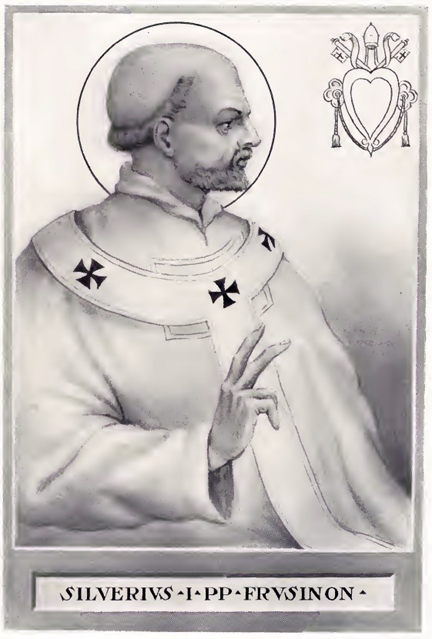Silverius soon incurred the wrath of the Empress Theodora when he refused to accept the heretical monophysites Anthimus of Constantinople and Severus of Antioch who had already been excommunicated and deposed by the previous pope. (The monophysites denied the human nature of Christ.) Silverius knew what it meant to oppose the strong-willed empress and is said to have remarked that by signing the letter of refusal to her request, he was also signing his own death warrant.
In an attempt to save Rome from further destruction by the Ostrogoth General Vitiges, Silverius invited the Byzantine commander Belisaurus into the city. Unfortunately, Belisaurus’ wife Antonina was as much a scheming woman as Theodora, and in order to gain the Empress’s favor, Antonina urged Belisaurus to depose Silverius on the false accusation that he had conspired with the Goths. Silverius was kidnapped and taken to Patara in Lycia, Asia Minor, and Theodora’s favorite, the Archdeacon Vigilius, was wrongly named the new pope.
When the Emperor Justinian received a message from the bishop of Patara telling him what had happened, he immediately gave orders that Silverius be returned to Rome and reinstated in the Holy See. But soon after his return to Italy, Silverius was captured by Vigilius’s supporters and imprisoned on the island of Palmaria. He did not survive long in prison and was either murdered by one of Antonina’s hired assassins or was left to die of starvation. The year was 537, and Silverius had served less than two years in office.
On the death of Silverius, Vigilius was now legitimately named the new pope. But if the Empress Theodora had hopes for her monophysites, the Holy Spirit had other plans: once Vigilius became pope, he ceased to support the heresy and in fact became a strong defender of orthodoxy, condemning the heretics in letters to both the Emperor Justinian and to the Patriarch of Constantinople.

